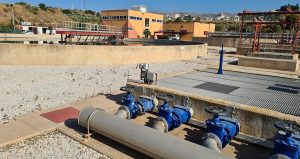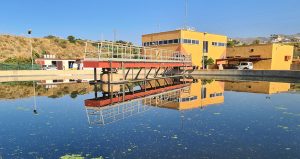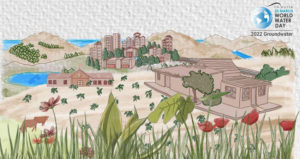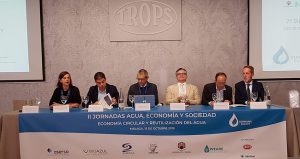Smart irrigation saves water with state-of-the-art technology
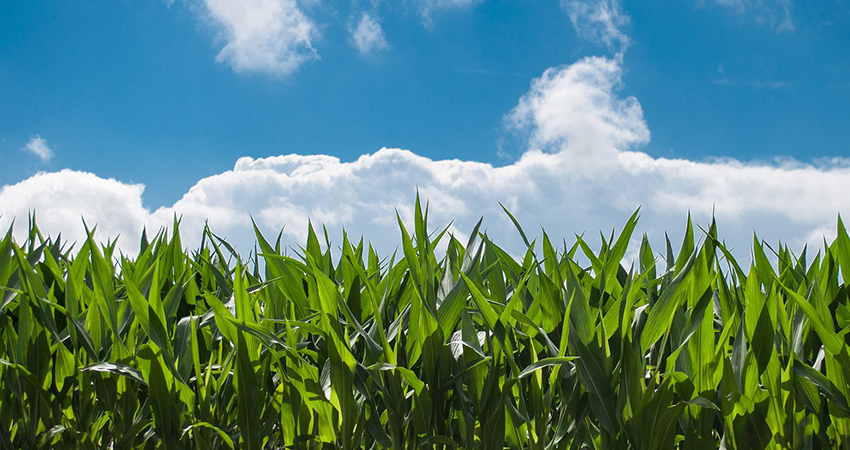
- 25 August 2023
-
Editorial Team
Share article:
Smart irrigation is providing solutions to some of the most critical challenges facing society, including supporting global food security and protecting water resources. Today’s irrigation controllers include advanced technology to help systems use water more efficiently. Many new controllers are compatible with tablets or smartphones, allowing the user to interact remotely with their irrigation system. Such systems are also able to optimize water delivery by assessing the local weather and even their environment.
Certainly for large agricultural systems, where the systems are most highly developed, the optimization of water delivery is impressive. One such company is eLEAF, which provides satellite based applications and data to optimise crop production and water management. The Dutch company was founded in 2000 after a break-through in the remote sensing domain when the first algorithm was developed that was able to compute biomass production and evapotranspiration products using satellite imagery.
Water saving technology
Today eLEAF’s partners range from institutions like the FAO and national governments, to water authorities, insurance companies and individual producers. eLEAF’s irrigation planner helps farmers to irrigate at the right volume, at the right time and at the right location. Their algorithms determine the actual crop water requirements in real-time and automatically notify the user when irrigation is necessary to avoid crop damage. Such smart systems maintain yield while saving water, energy and money. South Africa wine producer, Karen Clüver, said: “The data enables us to constantly re-evaluate our crops’ growth development and how much or how little water we are giving. Using biomass and water use parameters we use about 20% less water than before.”
Water-energy nexus
While eLEAF and other major operators, such as the Swedish company IRRIOT, operate on a global scale, the European water sector has also seen an increasing focus on sustainability and innovation. Smart solutions and advanced technologies play an important role in the European water sector, helping to improve the efficiency and effectiveness of water management. In addition, the sector is increasingly looking to renewable energy sources.
Drones
New technology involving the Internet of Things (IoT), AI, cloud computing, and edge computing are playing an essential role in increasing agricultural land productivity and irrigation efficiency. And drones are also an increasing feature in the high tech faming landscape or they can be used against illegal irrigation. Using data collected from drones alongside historical and environmental information, AI algorithms can generate optimized plans for the targeted application of fertilizers, pesticides, and optimized water levels in irrigation.
Smart irrigation systems
IRRIOT, founded in 2017, is at the forefront of wireless intelligent irrigation solutions. The company uses wireless two-way communication to the valves/sensors and provides cutting edge smart systems for largescale commercial operations. The IRRIOT wireless irrigation controller, communicates with up to 32 remote nodes. Optionally, IRRIOT systems can provide internet connectivity and remote system control. The base unit is an IoT device and it is connected to the Microsoft Azure cloud. It allows for a preconfigured watering schedule, soil state monitoring and events of failure. The IRRIOT web and mobile app functionality includes: monitoring of alarms on the base and remote unit levels; monitoring of states of magnetic valves and sensors; configuration of programs, a sequence of valve activations; connection of third party sensors.
Cloudbased platform
Spanish company Spherag offers an all in one irrigation platform to provide real-time data and precision sensors to cut inefficiency in watering systems. Collected data is integrated into their cloud-based platform, where powerful analytics algorithms consider various factors, such as crop types, and weather forecasts, to optimize water distribution. The platform automates critical processes like water allocation and scheduling, leading to maximize crop yield, and reduced water waste. Spherag’s Atlas devices are also compatible with solar pumped irrigation. Like most advanced systems the platform provides early detection of system failures too.
Special app for bigger farms
Another Spanish company, BrioAgro, offers a free trial of its smart irrigation app – an automatic calibration system that checks different parameters by means of additional soil sensors, probes, and satellite images. One of its strong points is that it connects easily to any irrigation system that is already installed on your farm. The app, which has been downloaded by more than a 100,000 people, can be used after the trial period for a monthly fee, without permanence.
Another smart app
Hydrawise, a product line of Hunter Industries, which is a global leader in the irrigation industry also has a well received app called Hydrawise Irrigation. One of its advantages is that you can control multiple units from the one app. It can also configure flow, rain and soil moisture sensors and provides real time weather conditions. One of its drawbacks is that a Hydrawise-Ready Irrigation Controller must be installed in your system.
Tackling calcium problems by design
The European Irrigation Association promotes the continued development of products, practices and services in irrigation, and to advocate for sustainable industry standards and water management policies that lead to a stable legal environment for irrigation professionals. Of course, some longstanding problems of irrigation systems cannot be solved virtually. These include the emitters becoming blocked due to calcium build up or because of other suspended solids. It is advisable that, prior to designing an agricultural irrigation system, one should perform a water quality analysis at a water testing laboratory.

